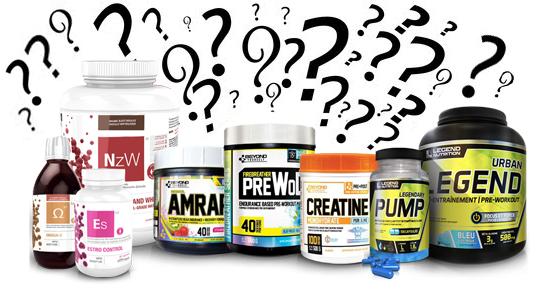Health experts are sounding the alarm on the growing use of sports supplements among young Australians, warning of potential health risks linked to these products. Recent reports highlight concerns over unregulated ingredients, misleading marketing, and the lack of adequate safety information, prompting calls for increased awareness and stricter oversight. The Australian Broadcasting Corporation examines the implications for youth health and what authorities are doing to address the issue.
Youth Urged to Exercise Caution Amid Rising Use of Sports Supplements
Increasing numbers of young Australians are turning to sports supplements in a bid to enhance their physical performance and appearance. Health professionals, however, caution that many of these products may contain unregulated ingredients that pose serious risks to developing bodies. Experts emphasize the importance of scrutinizing supplement labels and consulting with healthcare providers before beginning any new regimen. Reports indicate that misuse can lead to adverse effects such as hormonal imbalances, cardiovascular problems, and psychological disturbances.
Authorities are calling for greater awareness and education around safe supplement use, particularly targeting gyms and sports clubs frequented by youth. The Australian Therapeutic Goods Administration (TGA) urges consumers to watch for red flags including:
- Unsubstantiated claims of rapid muscle growth
- Products marketed without proper scientific backing
- Supplements containing banned substances or stimulants
| Common Risks | Potential Symptoms |
|---|---|
| Hormonal disruption | Mood swings, acne |
| Cardiac strain | Palpitations, high blood pressure |
| Liver toxicity | Jaundice, fatigue |
| Psychological effects | Anxiety, aggression |
Experts Highlight Potential Health Hazards Linked to Unregulated Products
Health professionals caution that many sports supplements available on the market lack rigorous regulation, raising concerns about their safety and efficacy. These unregulated products often contain undisclosed substances, varying ingredient concentrations, and potentially harmful contaminants. Experts emphasize that young consumers, especially adolescents, are at a heightened risk of adverse effects due to their developing bodies and often limited understanding of product contents.
Common hazards associated with unregulated sports supplements include:
- Unexpected stimulants leading to heart complications
- Hormone-altering agents causing developmental disruptions
- Contamination with banned or toxic substances
- Incorrect dosage labeling, risking overdose or underdose
| Risk Factor | Potential Impact | Example |
|---|---|---|
| Undisclosed Ingredients | Allergic Reactions, Toxicity | Stimulants like DMAA |
| Contaminants | Kidney & Liver Damage | Heavy Metals, Fillers |
| Mislabeled Dosage | Overdose & Side Effects | Excess Caffeine |
Medical Authorities Call for Stricter Oversight and Clearer Labelling
Leading medical experts are urging the government to implement more rigorous regulations on sports supplement products aimed at younger consumers, citing growing concerns over their safety and misleading marketing practices. They emphasize the need for clearer labelling that details potential health risks, ingredient sources, and dosage recommendations, arguing that many current products lack transparency and carry hidden dangers. These calls come amid reports of adverse reactions from adolescents who often use these supplements without proper guidance.
Professionals are also advocating for mandatory warnings regarding the possible side effects, particularly highlighting issues such as:
- Heart complications linked to stimulant ingredients
- Unknown long-term effects of novel compounds
- Interactions with prescription medications
| Common Ingredients | Potential Risks |
|---|---|
| Caffeine | Increased heart rate, anxiety |
| Creatine | Kidney strain, dehydration |
| Proprietary blends | Unknown effects, allergic reactions |
Practical Advice for Young Athletes on Safe Nutrition and Supplement Alternatives
Young athletes often face pressure to enhance performance and build muscle quickly, leading some to turn to sports supplements without fully understanding the potential health risks. Experts strongly recommend focusing on a balanced diet rich in whole foods such as lean proteins, whole grains, fruits, and vegetables. These natural sources not only provide essential nutrients but also support long-term growth and recovery without exposing young bodies to harmful additives or stimulants often found in supplements. Emphasizing hydration, consistent meal timing, and adequate sleep are equally critical components that help optimize athletic performance safely.
For those considering supplementation, parents and coaches should encourage safe alternatives that have been rigorously tested and approved by reputable health authorities. Here are some practical advice points for young athletes:
- Consult healthcare professionals before introducing any supplement.
- Prioritize “food-first” strategies rather than pills or powders.
- Be cautious of unregulated products that promise quick results.
- Track nutritional intake using apps or food diaries to identify any gaps.
- Focus on building habits that sustain long-term health and performance.
| Safe Nutrient | Food Sources | Benefit |
|---|---|---|
| Protein | Chicken, Beans, Eggs | Muscle repair and growth |
| Carbohydrates | Brown rice, Oats, Fruits | Energy supply for training |
| Iron | Spinach, Red meat, Lentils | Oxygen transport in blood |
| Calcium | Milk, Yogurt, Leafy greens | Bone strength and growth |
Wrapping Up
As concerns over the unregulated use of sports supplements among young Australians grow, health experts urge caution and emphasize the importance of seeking professional advice before consumption. With potential risks ranging from adverse health effects to long-term complications, the message is clear: prioritizing safe and informed choices is essential to safeguard youth well-being. The Australian Broadcasting Corporation will continue to monitor developments in this critical public health issue.





